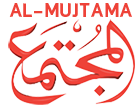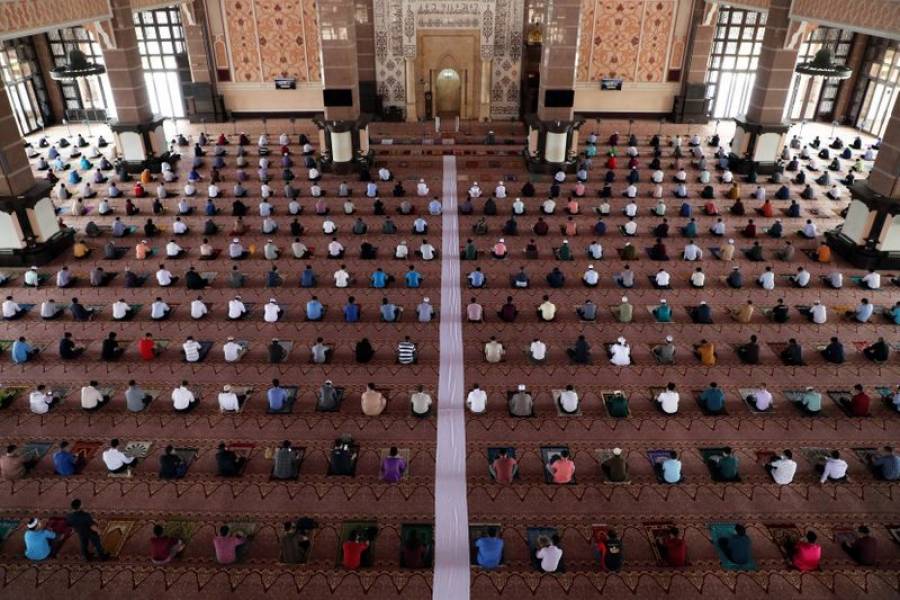Caliphate Overthrow Led to Palestine Loss Featured
We discussed before the profound connection between Palestine—as a blessed land and the cradle of divine messages—and Islam, as evident in the Quran, the Sunnah, and the exemplary lives of the righteous Salaf, including the Companions and the Tabi'in. Despite facing the First Crusade (492 AH/1097 CE), the Second Crusade (1917 CE) led by Allenby, and the Nakba (1948 CE), Palestine remains significant in the eyes of Muslims due to this profound connection. Thus, the issue of Palestine remains an ongoing concern that persists until its complete liberation and return, like all Muslim lands, under the rule of Allah.
This article will provide a concise historical overview of the last fifty years that led to the fall of Palestine into the hands of the Jews. It aims to reveal the conspiracies faced by Palestine, emphasizing how much effort is needed for liberation. Muslims must understand the magnitude of the endeavors and the bloodshed that was suffered by Palestinians, asserting that its people did not abandon it; instead, the conspiracy was horrifyingly bigger than all sacrifices, whether through the schemes of enemies or the oppression from those close, compounded by the challenging circumstances prevalent in the region and the decay it has experienced.
The Jewish State Project
The idea of gathering the Jews in one place had been on the minds of Jewish community leaders in the diaspora in one way or another. However, the first serious proposal was made through the book “The Jewish State,” published by Theodor Herzl in Berlin in 1896. Herzl's efforts aligned with those of Chaim Weizmann, leading to the First Zionist Congress in Basel, Switzerland, on August 29–31, 1897. The Congress recommended the establishment of a national homeland for Jews in Palestine. Zionist congresses continued once or twice every year, until the sixth congress in London in 1900 witnessed a proposition by British Foreign Secretary Lord Lansdowne. The idea was to grant Jews a national homeland in East Africa (Uganda), and a map of Uganda was displayed instead of Palestine in the conference hall. The proposal was put to a vote but was widely rejected due to opposition from Russian Jews, who were eligible for migration due to the persecution they faced under the czars. The issue came to an end when a Jewish girl stepped forward and tore the map; thus, Palestine was reintroduced as the national homeland.
Since 1896, Jewish community leaders have made persistent efforts to contact Sultan Abdul Hamid to remove obstacles hindering their settlement in Palestine. After five years, a solitary meeting with the Sultan took place, and Herzl recorded the Sultan's response in his memoirs: “Advise Dr. Herzl not to take serious steps in this matter.”
“I cannot relinquish a single inch of the land; it is not my personal property but the property of the people. (...) I cannot agree to dissect our bodies while we are still alive.”
After the Fall of the Caliphate
Following this, in 1901, the Sultan issued a decree prohibiting Jews from buying land in Palestine, extending a ban on their residency in Jerusalem from 1880. Jews couldn’t achieve any progress in settling or owning lands until the Sultan's overthrow and the rise of the Union and Progress Committee. In 1912, the laws on immigration sites to Palestine were abolished, and in 1914, the ban on land ownership was lifted.
During this time, Jewish persecution increased in Russia and Eastern European countries. Zionist Congress meetings continued with the establishment of the Jewish National Fund in 1899 and the Jewish National Fund organization in 1901. In the eighth Congress in the Hague in 1907, they declared that Palestine was the desired homeland. Weizmann addressed the British Prime Minister, stating that if Moses himself came to call Jews to a place other than Palestine, no one would follow him!
A period of political stagnation in the region followed, during which Jewish leaders maintained contacts with the leaders of Britain, the U.S., and France, as well as with the leaders of the Communist revolution seeking refuge in Switzerland, such as Lenin and Trotsky. Meanwhile, Weizmann made several visits to Palestine, stating in his memoirs: “Everyone had a foothold and institutions in Jerusalem except the Jews. We had not a single building there.” He mentioned that the number of Jews in Palestine in 1917 did not exceed 50,000.
Balfour Declaration
While the Arabs were relying on Britain's promises to Sharif Hussein for independence through exchanged letters with Henry McMahon, the British High Commissioner in Egypt, in 1915–1916, Weizmann was pushing for real assurances from Britain to help establish a national homeland in Palestine. The “Balfour Declaration” (by Lord James Arthur Balfour, the British Foreign Secretary) was issued on November 2, 1917, stating “the Government of His Majesty views with favor the establishment in Palestine of a national home for the Jewish people and will use their best endeavors to facilitate the achievement of this object.” France and the United States had previously given their pre-approval to this promise and committed to supporting it.
Days later (9/11/1917), British forces entered Jerusalem under General Allenby, assisted by Arabs, promising to liberate Arabs from the Turks and grant them independence. In early 1918, the Palestinian forces, as part of the secret Sykes-Picot Agreement between Britain and France in 1916, were set to share the collapsing Ottoman Empire's territories among the victorious nations.
When the Bolshevik Revolution succeeded in Russia in 1917, the agreement's details were revealed since it was signed in the presence of a Russian delegate on Russian soil. News leaked, and Arabs realized that Britain's promises were just an illusion. Jewish migration to Palestine began as part of the ominous promise, and the Arab movement in Palestine started opposing it.
The Buraq Uprising
According to Weizmann, the number of Jews increased threefold from 1918 to 1928, reaching 175,000, and they established significant institutions, including the Hebrew University in Jerusalem and the Jewish Agency outlined in the British Mandate document.
The leadership of Hajj Amin al-Husseini emerged prominently, forming the Arab Palestinian Association in Damascus with Aref al-Aref and Izzat Darwaza, preparing for a new phase of conflict.
- On August 14, 1929 (Day of Atonement), Jewish protests demanding access to the Buraq Wall (Wailing Wall) took place. The following day, they gathered and headed to Jerusalem.
- On August 16 (Friday and the Prophet Muhammad's birthday), Muslims flocked to Jerusalem. Sheikh Hassan Abu al-Saud preached them, saying: “Allahu Akbar (Allah is the Greatest), O Muslims... Allah took your Prophet in Al-Isra journey to this place, so you must preserve and protect it.” The crowds gathering in Al-Aqsa erupted and marched to the Western Wall, setting fire to the platform the Jews had put up.
- The next day, a dispute between a Muslim and a Jew escalated into an attack on Jewish shops in Jerusalem.
- On Friday, August 23, the British police surrounded Al-Aqsa Mosque and searched the worshipers. The news spread that the Jews had occupied Al-Aqsa, triggering a violent reaction.
- Muslims in Al-Khalil attacked the Jewish quarter, killing 60 and injuring 50.
- In Nablus, demonstrators attacked the police station, seized weapons, and killed nine Arabs, along with similar events in other regions.
- On August 26, Jews attacked the Akasha Mosque in Jerusalem. The events resulted in 133 Jewish deaths and 339 injuries, while on the Arab side, 119 were martyred and 232 were injured.
A British committee was formed to determine the ownership of the Western Wall. After a two-year investigation and hearing both parties' perspectives, the committee confirmed Muslim ownership of the Western Wall and its hall.
The First Islamic Conference
On the anniversary of Al-Isra Wal Miraj (27 Rajab 1350 AH, / December 1, 1931), the first Islamic Conference for Palestine was held under the leadership of Hajj Amin al-Husseini. Delegates from Palestinian cities and villages attended the conference, along with a significant number of leaders from the Islamic world. The conference concluded with general recommendations.
- In October 1933, protests and violent events erupted in most Palestinian cities and villages in protest of Britain's role in Jewish immigration.
- On January 25, 1935, a general conference was held in Jerusalem, attended by 500 Palestinian personalities and religious figures, including Muslims and Christians. The conference issued a resolution prohibiting the sale of land to Jews. (1)
-------------------------------------------------------------
- This article was published in Issue (859), 4 Sha'ban 1408 AH/22 March 1988 CE.
-------------------------------------------------------------------







